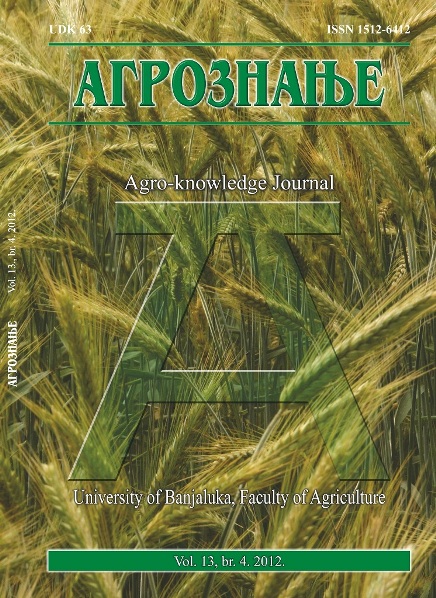External, Internal and Sensory Qualities of Table Eggs as Influenced by Two Different Production Systems
DOI:
https://doi.org/10.7251/AGREN1204555TAbstract
This study was conducted to determine the effects of two production systems (organic vs conventional cages) on egg quality parameters during the late laying period. The effects of a production system were investigated on external and internal quality and on the sensory attributes. The eggs produced in organic system had paler yolks (P<0.001) and thinner egg shells (P<0.05) than the eggs produced in the cages. Overall sensory quality was improved in eggs deriving from hens allocated in cages. Differences between organic and cage eggs indicated lower redness and higher yellowness (P<0.001) in organic eggs than in cage eggs. The organic eggs were characterised by a higher content of a-linolenic and docosapentaenoic acid (P<0.05) and lower content of linoleic acid (P<0.05) than the eggs from cages. The ratio of omega fatty acids, n-6/n-3, was most favourable in the organic eggs (5.93:1). In the cage eggs, the ratio n-6/n-3 was significantly (P<005) higher (955:1).Downloads
Published
2012-12-28
Issue
Section
Articles

